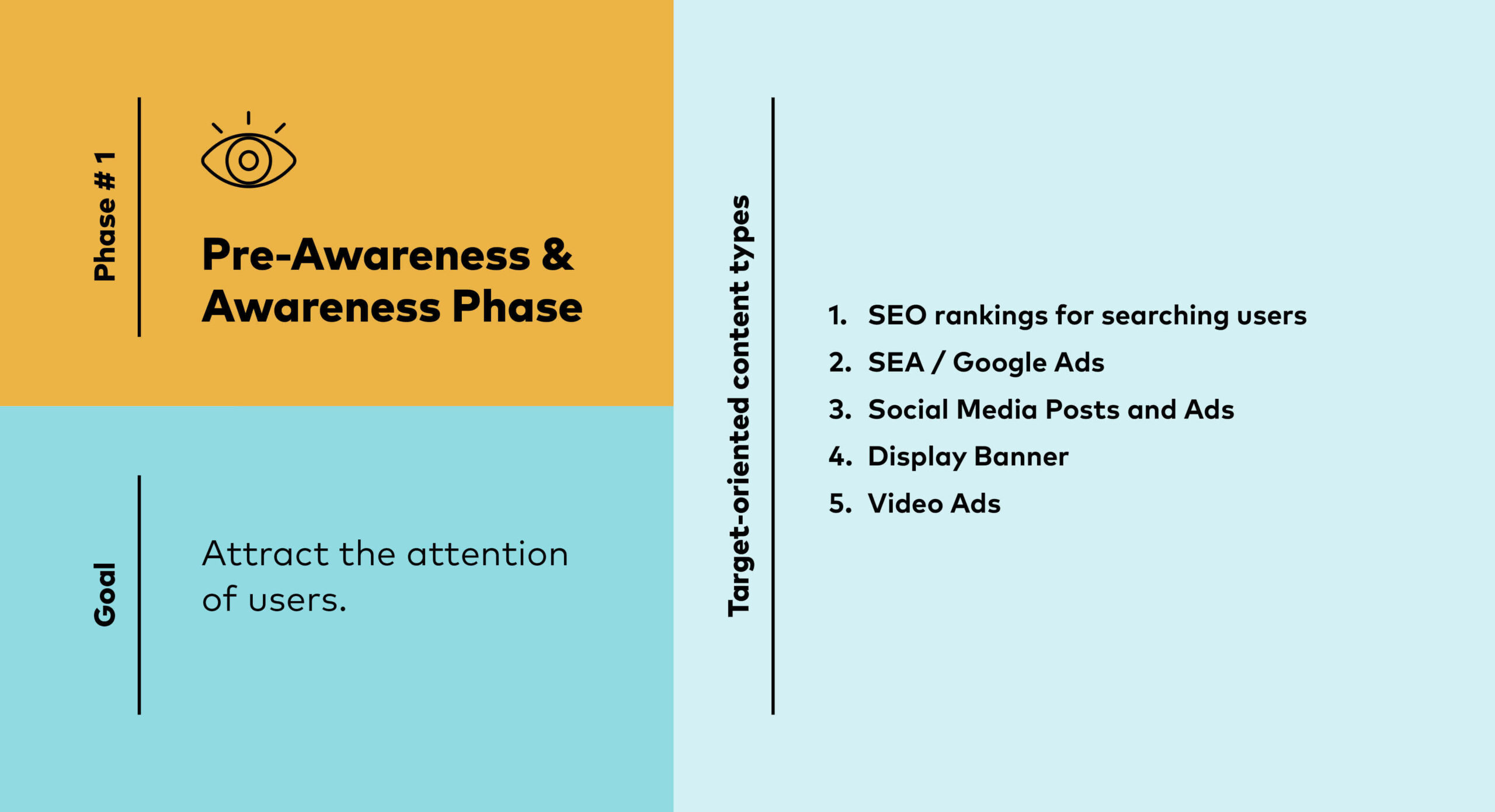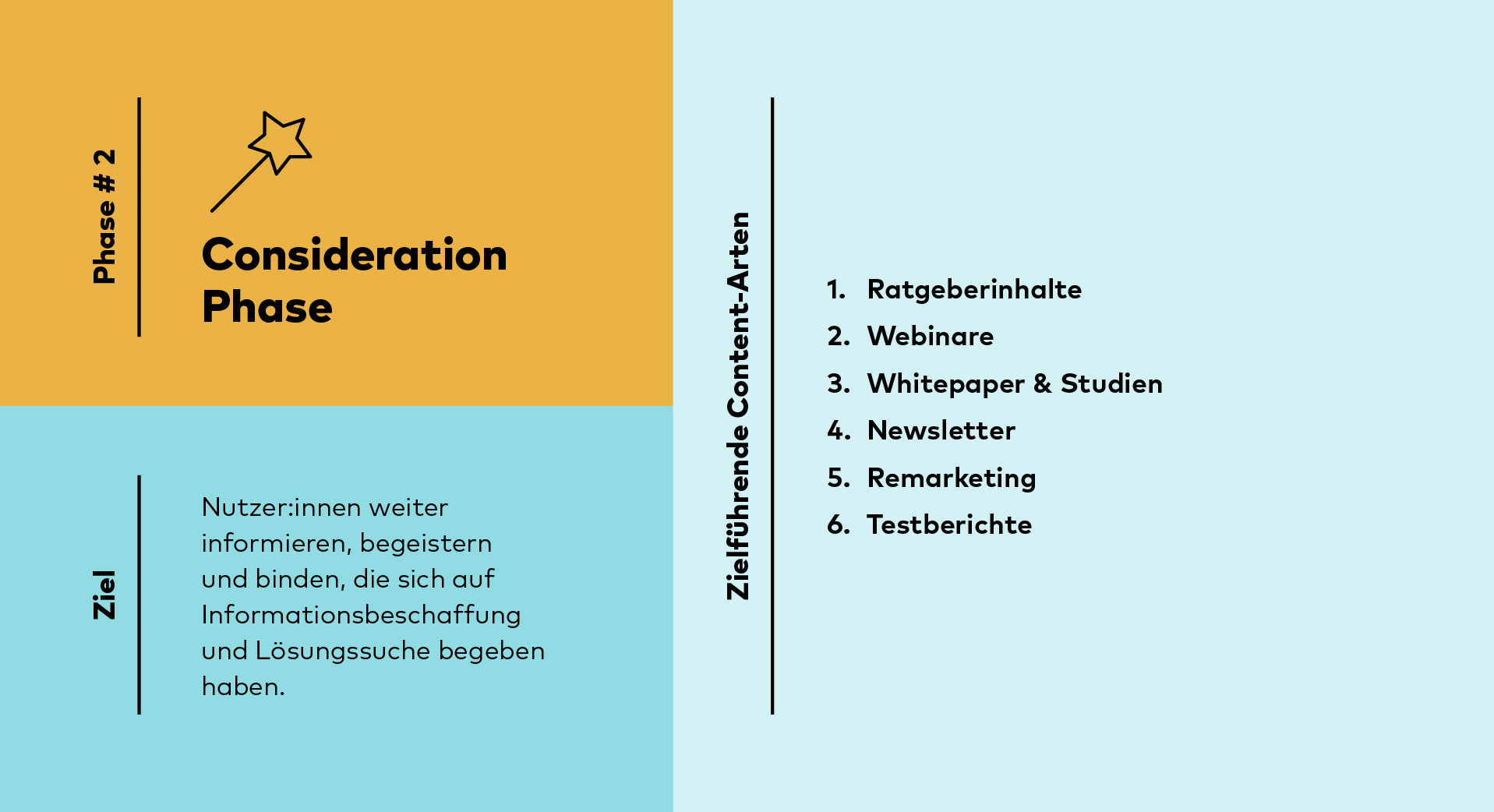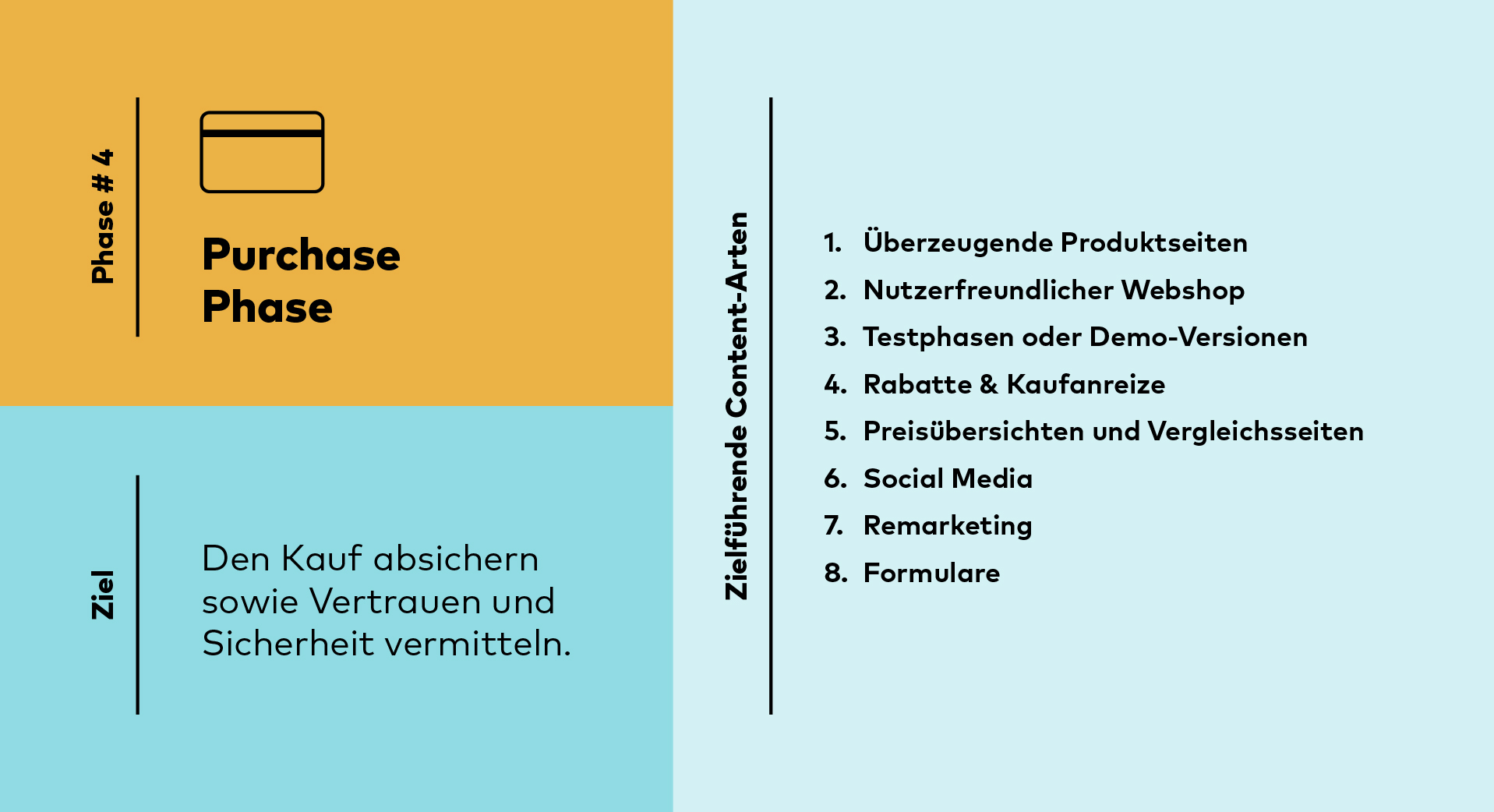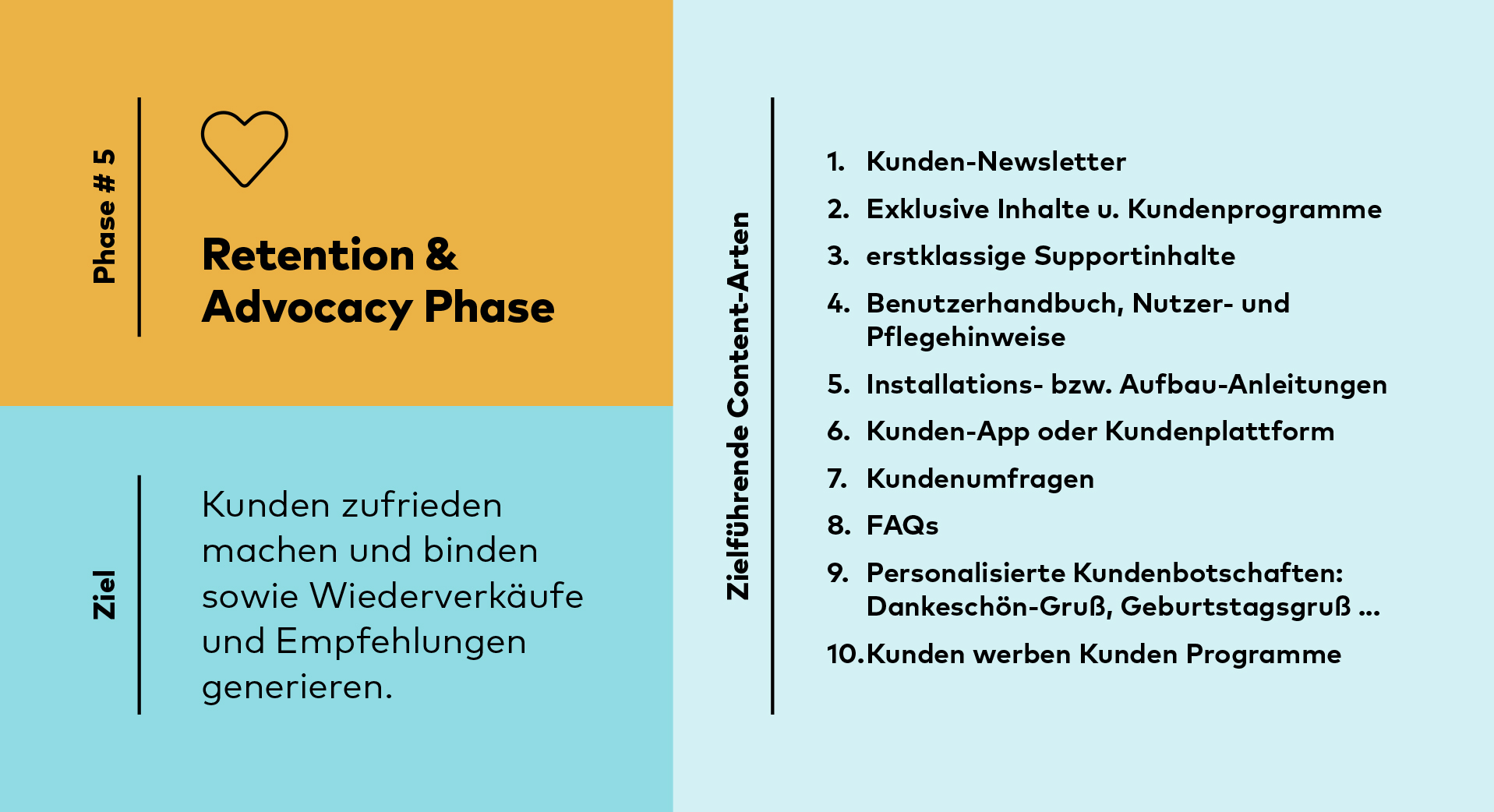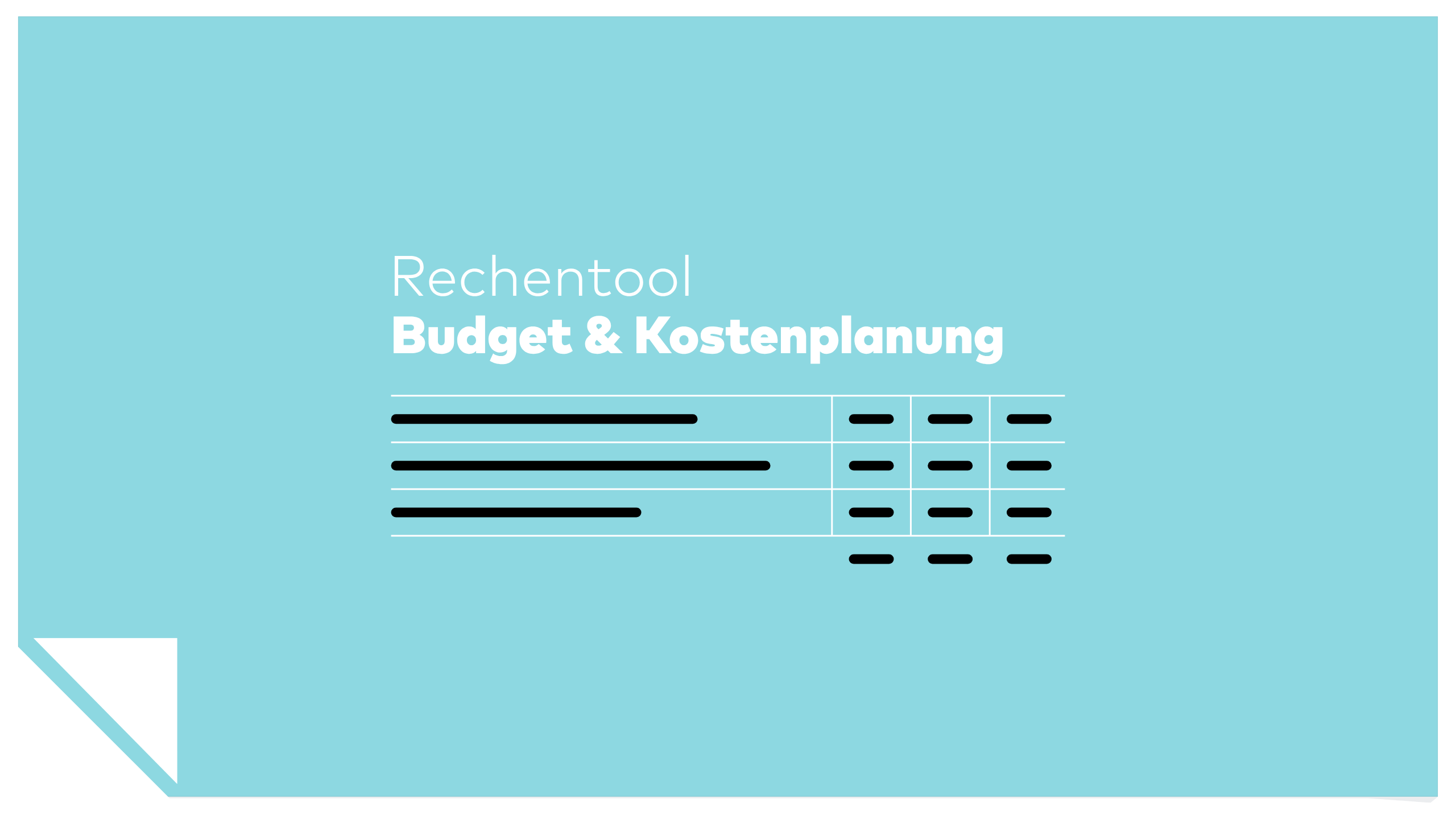
Examples, templates + tips from content marketing specialist Christian Tembrink
Marketing specialists agree: ‘Content is king’. An entire industry has developed around the planning, production and distribution of digital content. Content tools, producers and agencies offer thousands of types of content formats. Whether website or SEO text, podcasts, social media graphics or video clips: The market for content is huge and continues to grow – recently fuelled by artificial intelligence.
Many marketing managers find it difficult to assess the cost-benefit ratio of investments in the product ‘content’. That’s why I would like to use my experience in the field of content and inbound marketing to provide you with advice and support. My name is Christian Tembrink and as a Senior Consultant at the GROW Digital Group, I am the person to contact when it comes to content marketing controlling. If you have any direct questions, you can ask me directly via this page:
So I’m going to shed some light on this and answer your question:
What does good content cost?
Calculating content marketing costs – practical tips
At the latest when the marketing budget planning starts, marketing managers, webmasters and e-commerce experts are faced with the question: What do I have to factor in for the production of content, texts, graphics and other elements?
In my role as a senior consultant at GROW, as former managing director of the online marketing agency netspirits and as e-commerce project manager at Yello Strom, I have been able to evaluate the costs of ‘digital content’ as well as its benefits since 2003. I would like to share this experience, practical calculation templates and tips on prices and costing with you here.
First, let’s take a look at what components are necessary for website content to be ‘good’ and what actually constitutes ‘good content’!

What is content and what exactly makes it successful?
In the digital marketing context, content means any form of content that helps to establish a connection between an offer and prospective customers. Content can therefore be a downloadable PDF, a newsletter or a website.
It is therefore the foundation on which all content marketing contact points are built that play a role in the purchasing process and in which no direct human interaction takes place. In order to be able to assess whether content is good or what good content costs, we break content (aka website content) down into its individual components.

The question that follows is: What does it depend on for content to be or become good? Does it depend on it having a certain scope? Or that the copywriter likes it? Or because it was created by a reputable content marketing agency? In the end, pure guesswork and subjective gut feelings are not enough to judge whether content is good.
Just because the boss likes the graphic in green doesn’t mean that the image content is successful and wouldn’t work better in the colour blue. The quality assessment of digital content should therefore always be linked to the task of the content in the content marketing context. Because without a clear objective for the content, it is impossible to assess whether it works well or badly. In the marketing context, good means successful.
Four characteristics of good content
For content to be successful and valuable, it must fulfil certain criteria. On the one hand, success must be made measurable, and on the other, the content creation process must fulfil certain requirements.
The following factors help to ensure that a piece of content gradually becomes a valuable asset:
Good content…
- … pursues measurable goals that make an evaluation possible in the first place.
- … is geared towards the needs of the target groups in order to really inspire them on a whole level.
- … creates an effect that will be remembered.
- … is being further developed and tuned into a valuable asset based on data analyses.
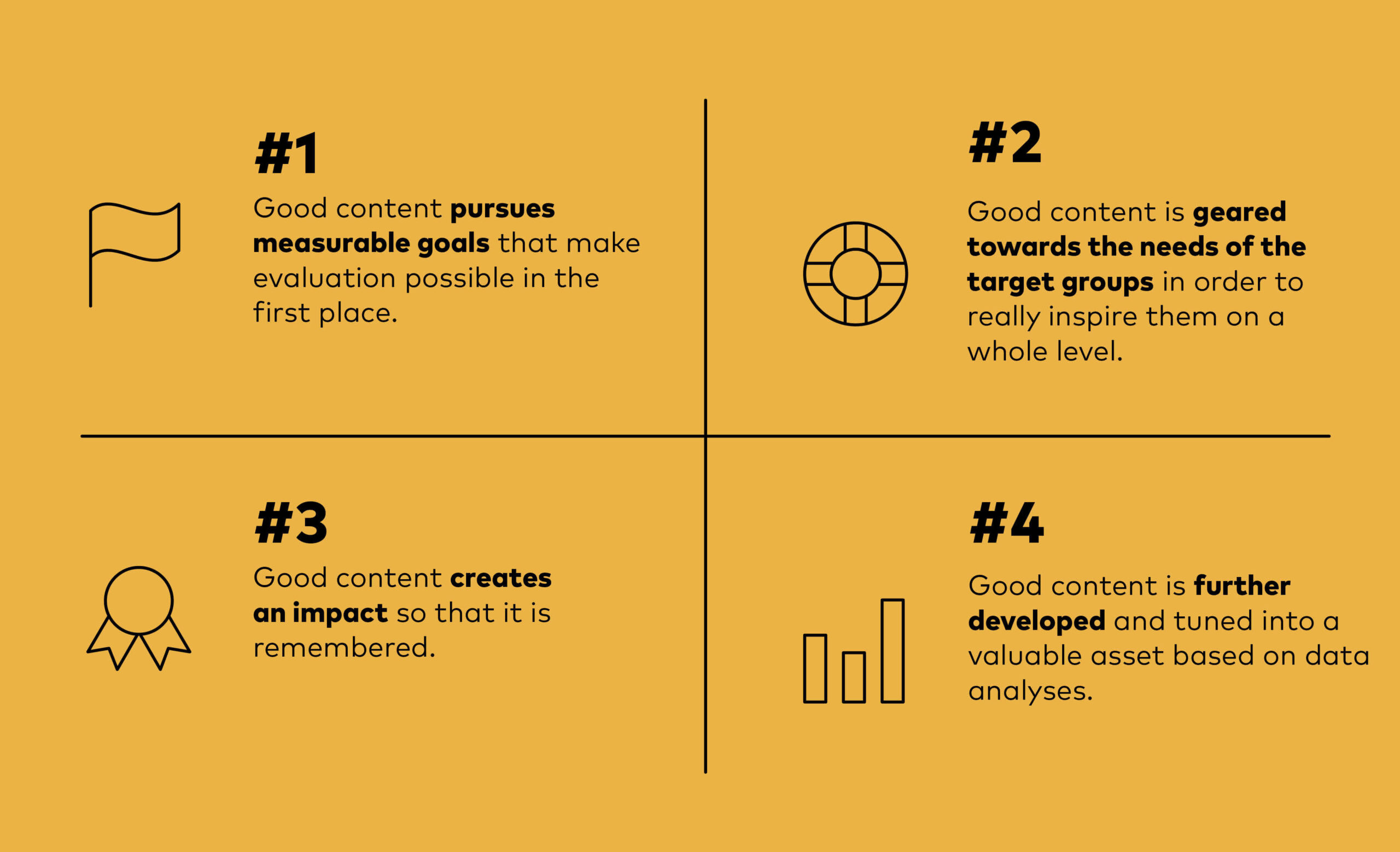
Further tips & offers of help for you:
Are you unsure which goals your content should fulfil and how you can make the goals measurable with key figures? Then take a look at the following content marketing goal overview and click through the various options.
Download content marketing goal template
Are you unsure exactly what makes your target group tick? Then personas are the right tool for you. They help you to perfectly understand the wishes, concerns and motives of your desired customers. Watch the webinar ‘Planning the best content for your target group using the persona method’ – you can access it for free here:
Would you like a second opinion and still have questions? The GROW team will be happy to help you with tips. You can simply make an appointment for a free consultation here:
What content costs do I need to consider?
In order to properly plan your investment in content marketing, you need to calculate the effort required for each type of content. You should estimate how much of which content and in which format you need to inspire your desired customers.
How you can proceed here: The overview below shows you types of content along the purchase decision process. For each pillar, you should put together the best possible content types for the persona.
As soon as it is clear which types of content you need, you plan the costs for the following content modules:
- Text creation (planning, research, writing, editing, proofreading, editing)
- Image & graphic creation
- Video creation
- Costs for distribution (e.g. social media adverts, newsletter promotion, etc.)
- Costs for maintenance in the content management system
- Optional: Pro-rata costs for operating the website
- Costs for article maintenance, optimisation and updates (important: keep developing your content)
Depending on the characteristics, the creation effort and prices for the finished content vary. In the age of AI content generators, a text that lists purely factual content is almost free. Whereas the costing of a website with a fantastic headline, finely tuned words and a pictorial explanation of highly complex issues is more expensive!
In addition to the text, there is also the preparation of the content, enrichment with graphics, internal links, statements, tools and downloadable elements. A landing page like this can quickly cost several thousand euros. However, there is a high probability that the investment in the content will pay off: if the content really moves the target group, the investment can quickly pay for itself and ensure a lot more turnover and sales.
How to calculate the costs for content – calculation template
As no two pieces of content marketing are the same, we have created a practical budget calculation template for you. You can use it to enter the prices of your service providers and the planned components for your content. The stored formulas ensure that the result and the final costs for your website content are displayed directly to you.

Calculate content costs: With the GROW content cost planning tool
Texter prices – cost and billing models for content
Some companies outsource the production of content to service providers such as Textbroker or Content.de. These offer various pricing models for copywriters. A clear tip for your own website is to focus on quality content. Companies can easily outsource content production via managed service offers from content providers.
A frequently found pricing model is based on the cost per word for a text. With some text providers, the creation of website content starts at 2 cents per word. To make this figure tangible: An A4 page of continuous text including some subheadings in a Word document with font size 11 contains approximately 420 words. At a price per word of 2 cents, this results in a fee of 8.40 euros for this A4 page.
Since the text has to be researched, a few conversations have to be held, the sentence structure has to be polished and proofreading and editing have to be carried out, no text miracles can be expected with such low fees. In order to achieve a profitable hourly rate, the only option for authors is to quickly rattle off content. Those who put their heart and soul into the text for hours and days cannot offer such fees.
Do you have questions or would you like a professional exchange on the topic of content production? Take the first step and contact the GROW team – we look forward to helping you!
Is it really advisable to focus on minimal cost-per-word prices for website texts? I think NOT – because Goethe already recognised that a good text doesn’t necessarily have to be long. This contradicts the ‘price per word’ billing model, as authors are interested in writing more rather than less!
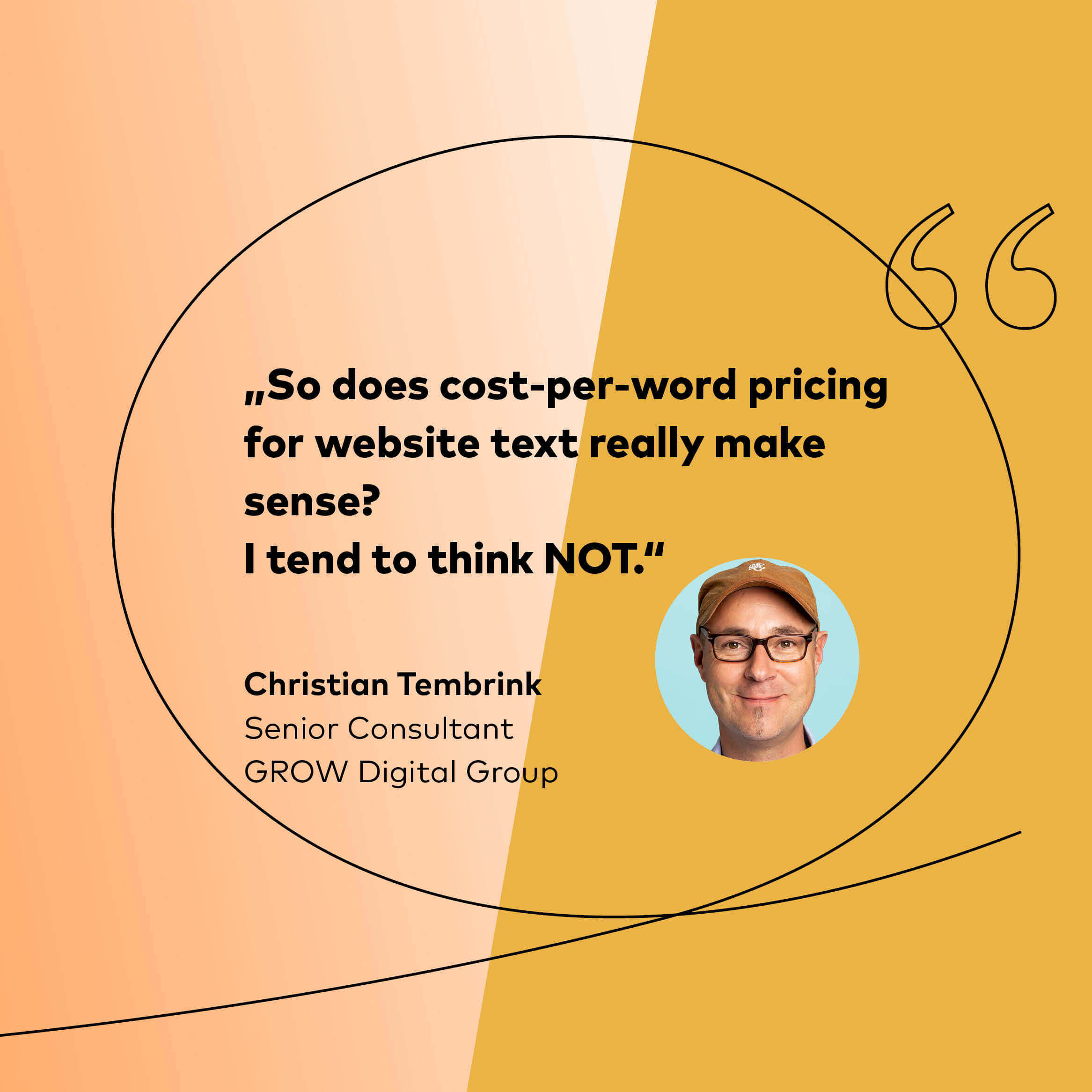
Buying website texts by price per word makes little sense!
Further billing models for the production of content
- Continuous content production for a fixed monthly budget: Your copywriting team knows each month how much time can be scheduled and billed for content production. This gives everyone involved security and flexibility at the same time: for small text tasks (e.g. writing social media posts), more can be delivered each month; for larger jobs (extensive guide content), content can be honed for several months at a time.
- Topic and project-based calculation: The topic and the type of digital content to be developed are determined. We then calculate which content components are to be created and to what extent, based on the specific topic.
As you have learnt, successful websites consist of more than just text. Good content contains images, tips, templates, statistics or other suitable supplementary formats. In addition, website texts not only need to be created, but also continuously evaluated, monitored and polished. We do this too: If you are missing content in this article or have further tips or questions, send us your input!
Calculate the content ROI: Focus on the value of content
So far, we have focussed heavily on the costs of texts and website content. It is clear that the development of transparently assessable content production and optimisation processes is a major undertaking. Investments need to be made in employees, external expertise, new processes and tools in order to evaluate and continuously optimise sales-relevant content. Depending on the variety of products, product range and digital maturity of the company, the digitalisation of content management and commerce processes can quickly turn into an annual project that can cost thousands of euros.
Let’s talk about your content project – we’ll be happy to help and advise you: tell us here what’s currently on your mind!
In my 15 years as managing director of the online marketing agency netspirits, I have advised hundreds of clients on content marketing. I was often asked: How much do I need to invest in my blog? How much budget do I need for fresh content in the coming year? The answer to this question remains pure guesswork if it is not clear which marketing goals are to be achieved with the content.

The cost view of content does not reveal how much content is really worth!
In addition to the pure cost perspective, the benefits of the content should always be evaluated. This is the only way to decide whether the investment in content is worthwhile or not. Because even high investments in website texts can recoup many times the costs in a short time if the text fulfils its job well.
To calculate the value of your content, we have created a content marketing ROI template for you. In the file you will find two different tabs: one for the evaluation of B2B and the other for B2C content projects. You can download the content ROI template here:
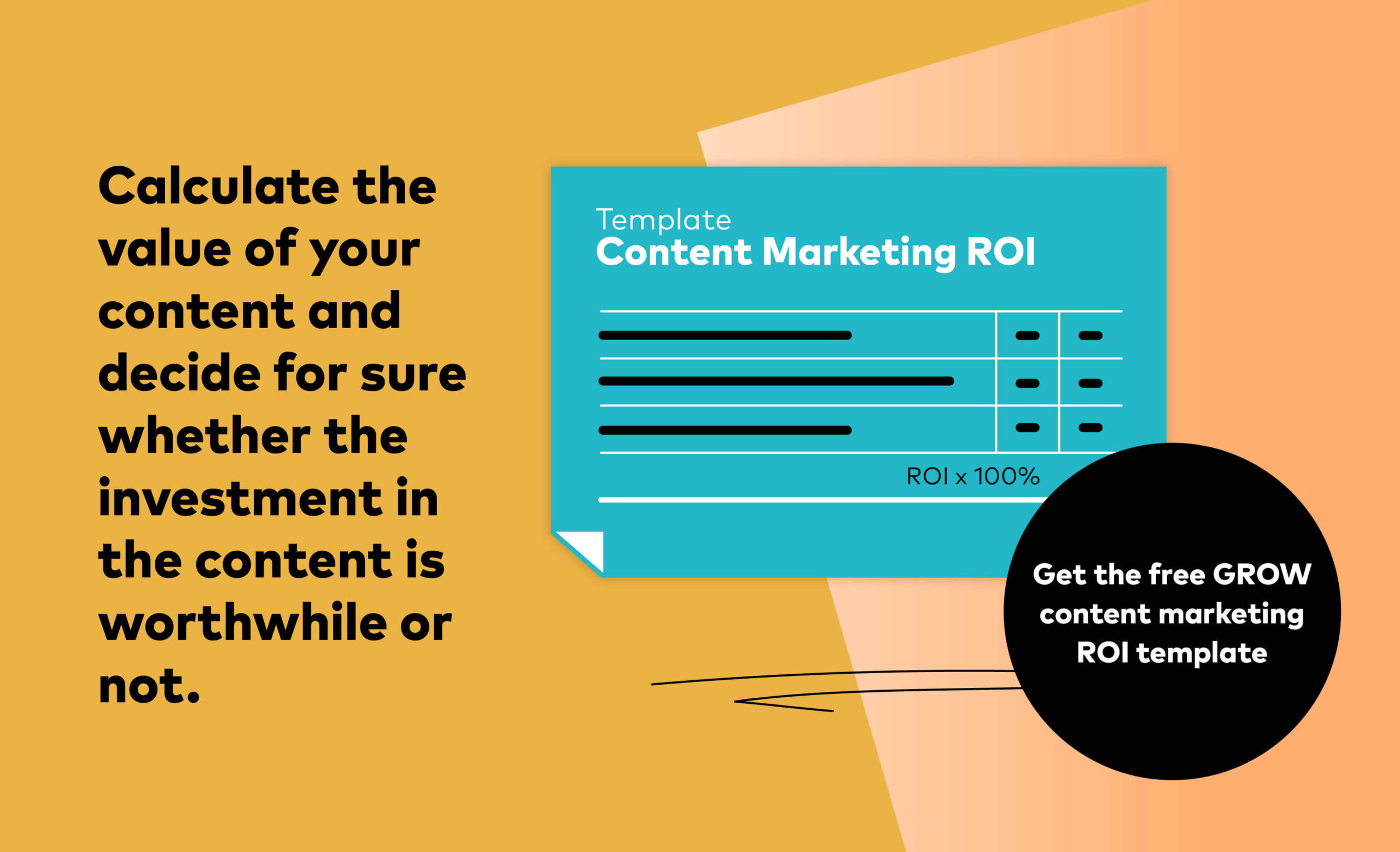
Content marketing ROI example: cost-benefit assessment
In this final section, we will show you how to evaluate the cost-benefit of content using a real example.
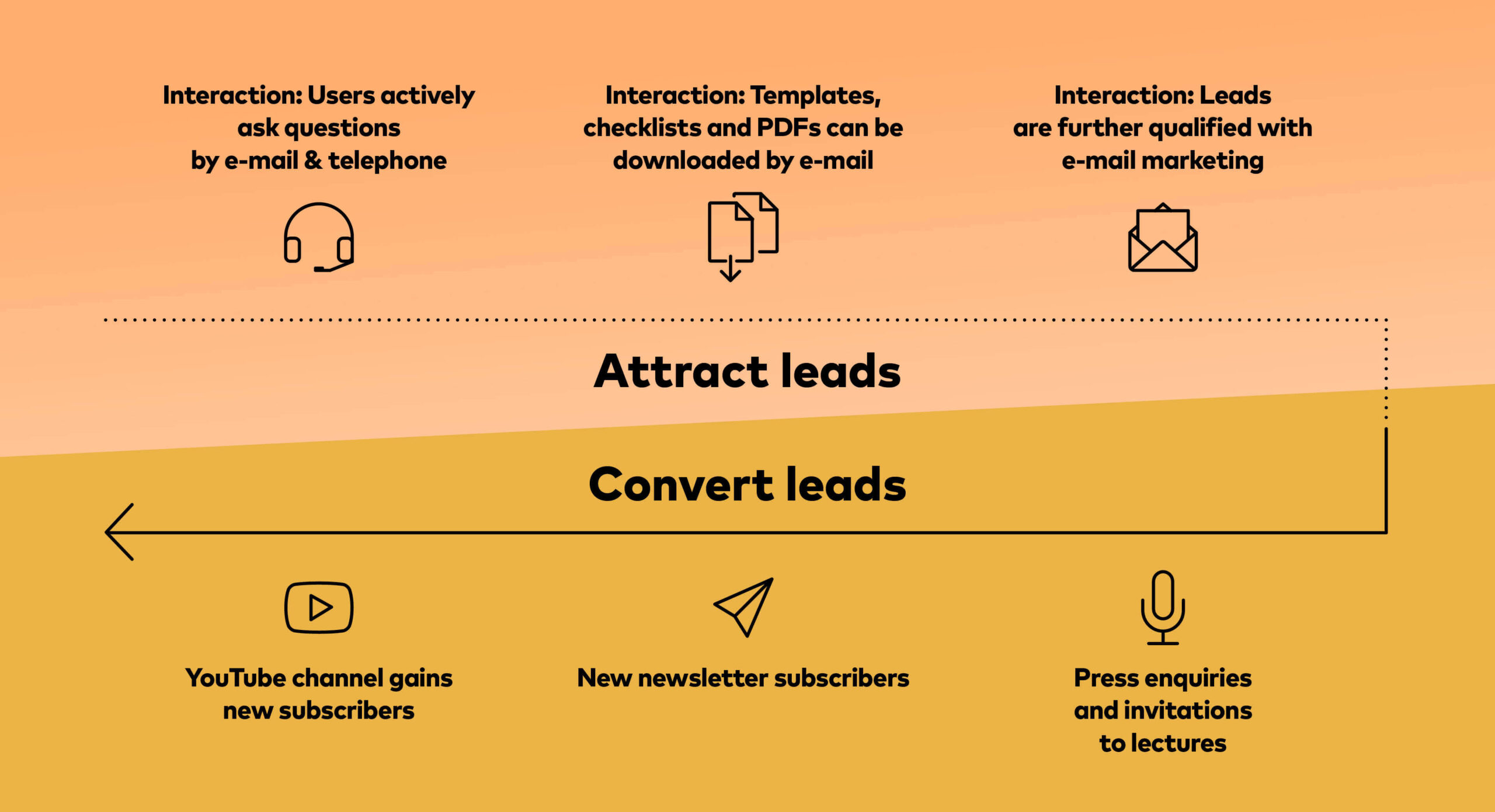
In this project, a budget of over 10,000 euros was invested in content production (research, texts, images, videos and whitepapers) for a B2B guide article. In addition, a budget of 5,000 euros was invested in the distribution of the article (social media ads, Google ads, etc.). That sounds like a lot of money for a single article, doesn’t it? Some may ask: ‘That much for just one website?’. But wait until you see what benefit the content has brought. Because after twelve months, it was clear that the investment was more than worth it.
Within the website content, users were offered several interaction options – all of which were monitored using measurement tools. For example, questions could be asked from the article. Visitors made active use of this and many of them resulted in intensive conversations (by email or telephone). Some of these conversations (which were triggered by the article) quickly resulted in commissions. In addition, helpful templates, checklists and PDF documents could be downloaded by providing an email address. The recipients were subsequently contacted by means of automated e-mail offers. This also resulted in conversations, emails and some enquiries and new commissions.
In addition, videos were offered in the article that reproduced the content of the guidebook article in moving image format. At the end of the films, viewers were invited to subscribe to the associated YouTube channel – both the proportion of users who watched the video and the proportion of those who subscribed to the channel were measured. In addition, there were further options for action such as a newsletter subscription, the option to rate and comment on the article or to order a summary by post in print form.
Thanks to the web analytics options, user satisfaction could be assessed shortly after the article was published based on the interactions. In addition to positive comments and ratings, more and more email leads were generated every day and contacted with follow-up offers. The article even resulted in press enquiries and invitations to presentations. On the one hand, knowledge was imparted, but on the other hand, expertise was also underpinned – in other words, a good reputation and standing was built up through the content. After one year, the investment of around 15,000 euros in a really good guidebook article and the further optimisation of it has generated an order volume with an annual turnover of more than 60,000 euros – a content marketing return of 300%!
Conclusion & help with questions: Hopefully this article has met your expectations. We look forward to your feedback. Is something missing? Were parts too extensive? Send us a message or leave a review of the article below. This is the only way we can learn what we like or where we need to optimise further. The GROW team wishes you every success with your content planning and will be happy to help you at any time if you have any questions.
